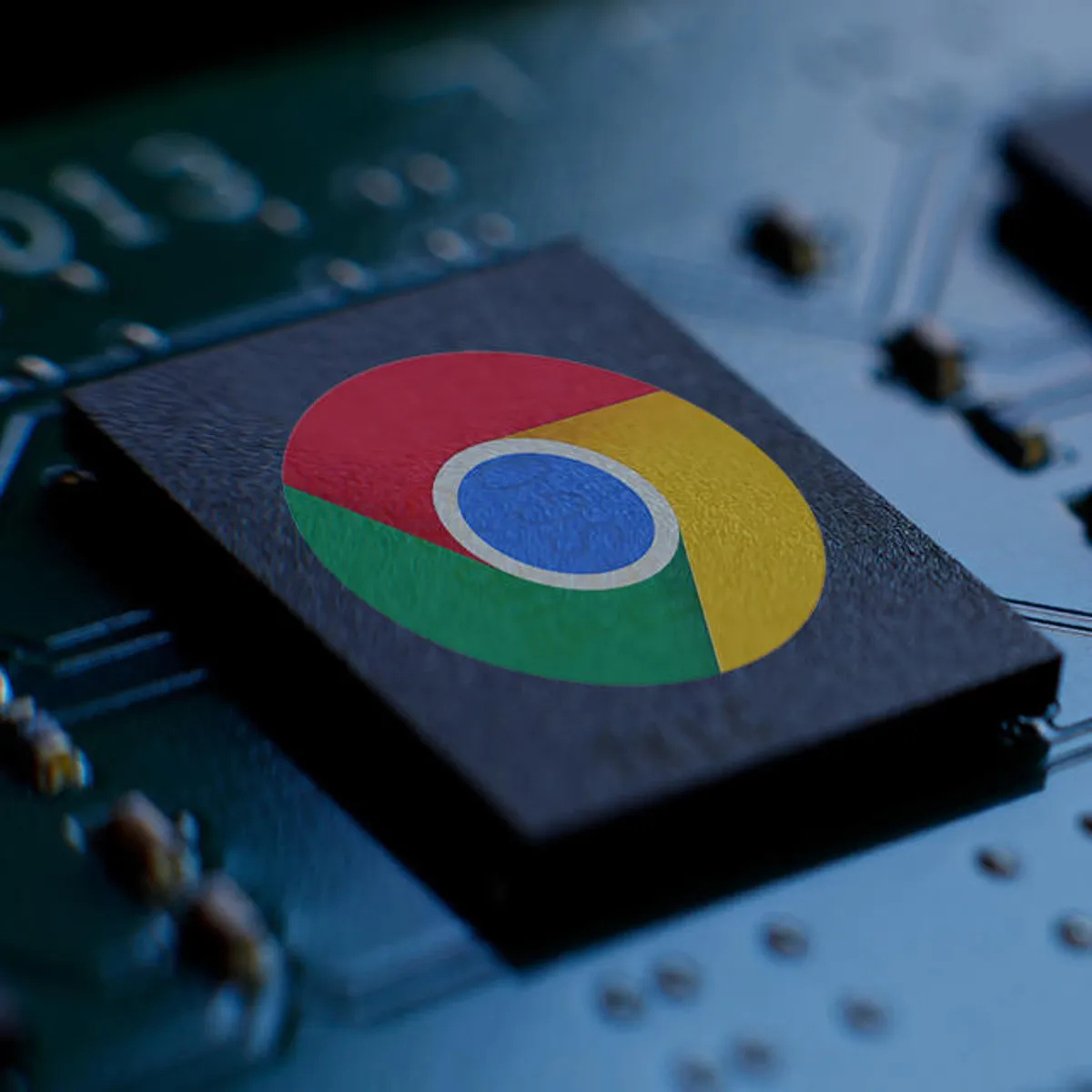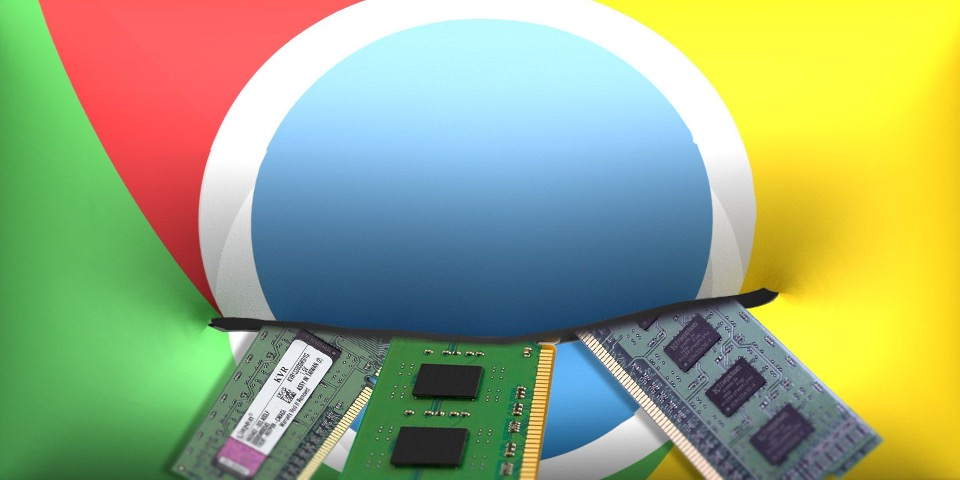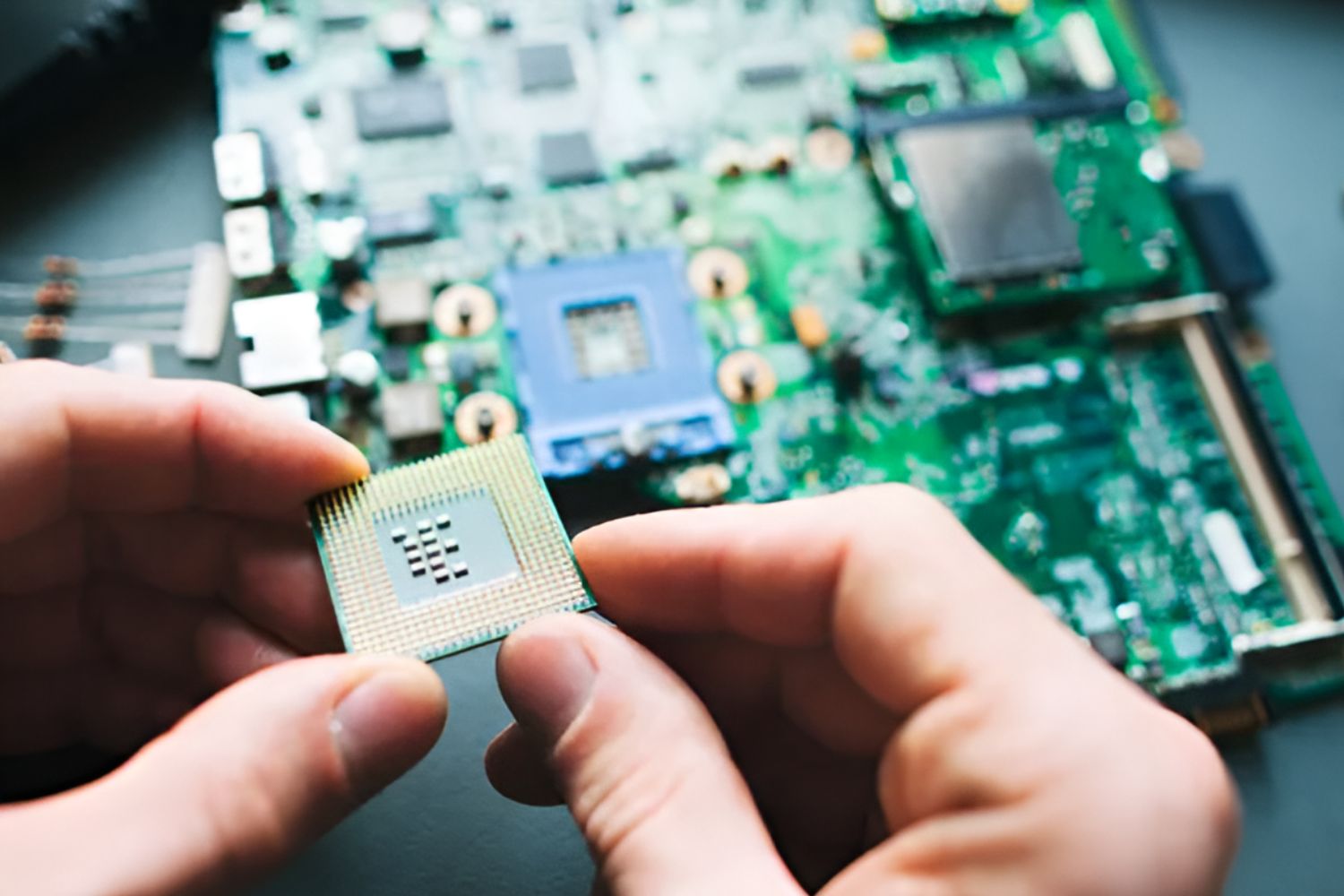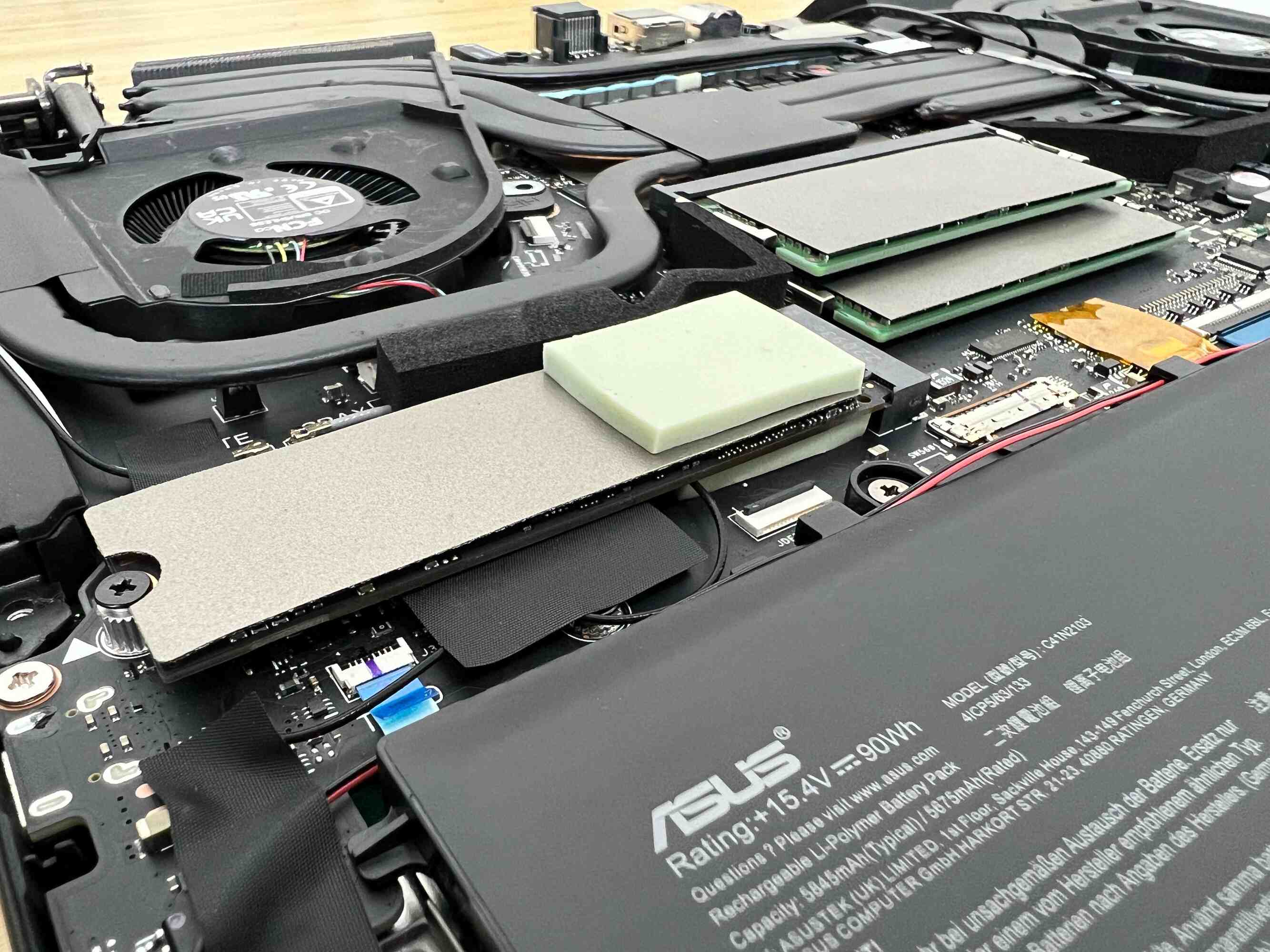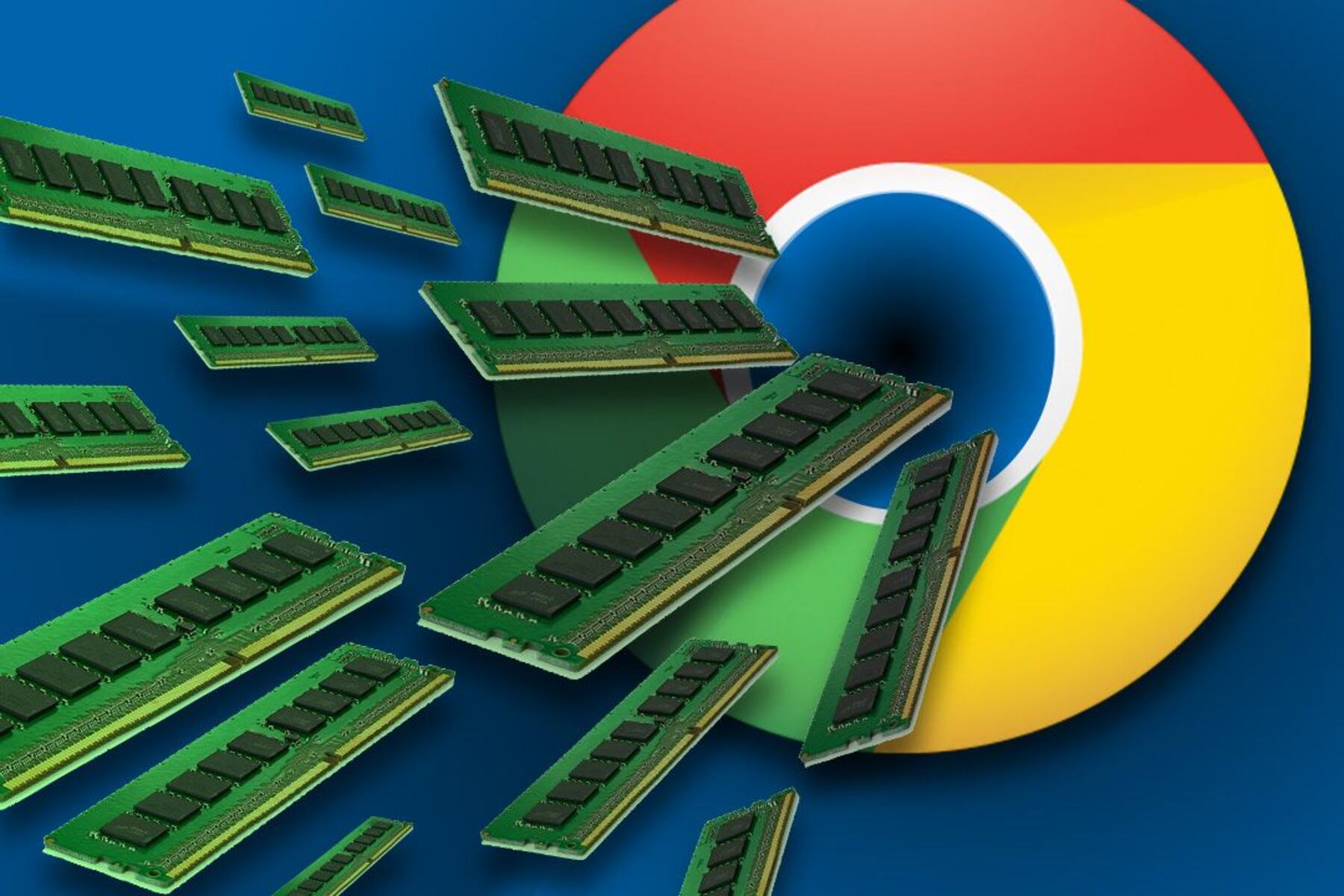Introduction
Welcome to the world of web browsing, where Google Chrome has taken the throne as the most popular browser in the world. With its sleek design, fast performance, and extensive features, Chrome offers users a seamless browsing experience. However, there is one persistent issue that many Chrome users have encountered – the seemingly excessive RAM usage.
RAM, or Random Access Memory, is a crucial component of any computing device. It acts as temporary storage for actively running programs and allows for multitasking and faster access to data. While it is normal for web browsers to consume some amount of RAM, Chrome has been notorious for its seemingly insatiable appetite for memory.
So, why does Chrome need so much RAM? In this article, we will delve into the intricacies of Chrome’s RAM usage and explore the factors that contribute to its high memory consumption. We will also provide some tips and tricks to help you optimize your Chrome browser and reduce its RAM footprint.
Before we dive into the details, let’s start with a brief explanation of what RAM actually is.
What is RAM?
RAM, or Random Access Memory, is a crucial component of any computing device, including your computer or smartphone. It serves as temporary storage for data that is actively being used by the device’s operating system and running programs. Unlike permanent storage devices such as hard drives or SSDs, RAM is volatile, meaning it loses all data once the device is powered off or restarted.
Think of RAM as your computer’s working memory. When you open an application or launch a web browser like Chrome, the necessary program files and data are loaded into RAM to allow for quick access and execution. Whenever you perform any action within the program, such as opening a new tab or loading a website, the relevant data is fetched from RAM. This significantly speeds up the process compared to accessing the data from a slower storage device.
The amount of RAM your device has determines its capability to handle multiple tasks simultaneously. More RAM enables smoother multitasking, allowing you to run several applications or browser tabs without significant performance degradation. It also facilitates faster data retrieval, reducing loading times and improving overall responsiveness.
It’s important to note that RAM is different from storage devices like hard drives or SSDs. While storage devices store data permanently, RAM only stores data temporarily while the device is powered on. This is why restarting your computer can often resolve performance issues, as it clears out all data from RAM, giving you a fresh start.
So, when it comes to web browsing and using applications like Chrome, the amount of RAM available on your device plays a crucial role in determining how smoothly and efficiently they run. With this understanding of RAM, we can now explore why Chrome tends to consume a significant amount of this valuable resource.
How Does Chrome Use RAM?
Google Chrome is designed to be a fast and powerful web browser that offers a wide range of features and functionalities. However, this performance comes at the cost of high RAM usage. Chrome is known for being a memory hog, often consuming a significant portion of a computer’s available RAM. But why does Chrome use so much RAM, and how does it utilize this resource?
One of the primary reasons for Chrome’s high RAM usage is its multiprocess architecture. Unlike other browsers that use a single process to handle all tabs and extensions, Chrome uses a separate process for each tab, plugin, and extension. Each of these processes requires its own memory allocation, resulting in a higher overall RAM usage. While this approach offers better stability and security, it can lead to increased memory consumption.
Another factor contributing to Chrome’s RAM usage is tab isolation. Each tab in Chrome runs in its own process, known as the Render Process. This isolation prevents a single unresponsive tab or website from causing the entire browser to crash. However, it also means that each tab consumes its own memory, which can lead to significant RAM usage, especially when multiple tabs with resource-intensive websites are open simultaneously.
Extensions and plugins further add to Chrome’s memory footprint. While these add-ons provide additional functionality and customization options, they also require memory to run. Some poorly optimized or outdated extensions can lead to memory leaks, where memory resources are not properly released after use, resulting in continuous memory consumption even when the browser is idle.
It’s worth mentioning that Chrome’s RAM usage can also be influenced by factors such as the number of open tabs, the complexity of web pages, and the amount of data being cached. Media-rich websites with heavy JavaScript and multimedia content can contribute significantly to memory consumption, as Chrome needs to allocate more RAM to handle these resource-intensive elements efficiently.
While the high RAM usage in Chrome can be concerning for users with limited memory resources, it’s important to understand that Chrome’s design philosophy prioritizes performance and security over minimal memory usage. By utilizing multiple processes, tab isolation, and extensions, Chrome provides a robust and stable browsing experience.
In the next section, we will explore the implications of Chrome’s high RAM usage and discuss some tips to optimize and reduce its memory footprint.
The Multiprocess Architecture
One of the key factors contributing to Chrome’s high RAM usage is its unique multiprocess architecture. Unlike traditional browsers that use a single process to handle all tabs and extensions, Chrome employs a separate process for each tab, plugin, and extension.
This multiprocess architecture offers several advantages. Firstly, it enhances stability and security. If one tab or process crashes, it does not affect the overall browser, and you can continue using other tabs without interruption. This isolation prevents a single faulty website or extension from bringing down the entire browsing session.
Additionally, the multiprocess architecture enables efficient multitasking. Each tab or process operates independently, allowing for smoother parallel execution. This means that if one tab is loading a resource-intensive website, other tabs can continue functioning normally without being affected.
While the multiprocess architecture provides numerous benefits, it does come with a trade-off: increased memory consumption. Each process requires its own memory allocation, which can quickly add up when multiple tabs and extensions are open simultaneously.
Chrome’s multiprocess architecture also includes a special process called the Renderer Process. This process is responsible for rendering the webpage content of each tab, executing JavaScript, and handling user interactions. By isolating the rendering process, Chrome protects the browser from potential security vulnerabilities present on websites.
Another important component of the multiprocess architecture is the Browser Process. It manages the overall browser operations, including handling user inputs, managing tabs, and coordinating the communication between different processes. The Browser Process uses a minimal amount of memory to maintain control over the various components of the browser.
By utilizing multiple processes, Chrome prioritizes stability and security. However, it’s important to note that this architecture can result in higher memory usage compared to browsers that use a single process. The benefit of improved performance and security outweighs the potential drawback of increased RAM consumption for most users, but it might be a concern for those with limited memory resources.
In the next section, we will discuss another factor that contributes to Chrome’s high RAM usage – tab isolation.
Tab Isolation
Tab isolation is an integral part of Chrome’s multiprocess architecture and contributes to its high RAM usage. In Chrome, each tab runs in its own process, known as the Render Process. This means that every website or web application you open in a new tab operates independently from others.
The primary advantage of tab isolation is improved stability. If a website or web application in one tab becomes unresponsive or crashes, it does not affect the performance of other tabs. You can easily close the problematic tab without affecting the rest of your browsing session, allowing you to continue working or accessing other websites seamlessly.
Furthermore, tab isolation enhances security. As each tab runs in a separate process, it prevents malicious websites or web applications from accessing information or resources from other tabs. This isolation minimizes the risk of cross-site scripting (XSS) attacks and unauthorized data access.
While tab isolation provides these important benefits, it also contributes to Chrome’s high RAM usage. Each tab requires its own memory allocation to store the webpage content, JavaScript code, CSS styles, and other resources. The more tabs you have open simultaneously, the more memory Chrome needs to allocate to manage them all.
This can be particularly noticeable when you have multiple tabs open, especially ones with resource-intensive websites or web applications. These tabs may consume more memory due to the complexity of the content being rendered, such as heavy media content, dynamic JavaScript interactions, or data-heavy web applications.
To help mitigate the RAM usage associated with tab isolation, Chrome includes a feature called “Tab Discarding.” This feature automatically suspends background tabs that are not actively being used, freeing up memory for tabs that need it. When you switch back to a suspended tab, Chrome reloads the webpage, ensuring you can quickly resume where you left off.
Tab isolation in Chrome is designed to offer a stable and secure browsing experience, but it does come with the cost of increased memory usage. It’s important to be mindful of the number of tabs you have open and close ones that are no longer in use to optimize the browser’s memory consumption.
In the next section, we will explore another aspect that contributes to Chrome’s high RAM usage – extensions and plugins.
Extensions and Plugins
Extensions and plugins are powerful tools that enhance the functionality and customization options of Chrome. While these add-ons provide valuable features, they also contribute to Chrome’s high RAM usage.
Extensions are small software programs that add specific features to the browser. They can range from ad-blockers and password managers to productivity tools and social media integrations. Each installed extension runs its own code in the background, requiring memory resources to operate.
Plugins, on the other hand, enable Chrome to run specific types of content, such as Adobe Flash Player or PDF viewers. Plugins are typically activated only when needed, but they still consume additional memory when active.
While extensions and plugins are beneficial for customization and convenience, poorly optimized or outdated ones can lead to memory leaks. A memory leak occurs when a program fails to release memory resources after they are no longer needed. This can result in continuous memory consumption, even when the browser is idle.
To optimize Chrome’s RAM usage, it’s important to regularly review and maintain your installed extensions and plugins. Consider removing unnecessary or unused ones and updating the remaining ones to their latest versions.
Additionally, keeping an eye on the memory usage of individual extensions and plugins can help identify resource-intensive ones. Chrome provides tools to monitor the memory usage of extensions and provides the option to disable or remove those that are causing excessive consumption.
Reducing the number of active extensions and plugins can also help alleviate Chrome’s overall memory footprint. Consider disabling or uninstalling those that are not essential to your browsing experience.
Furthermore, Chrome offers a feature called “Tab Freeze” for addressing extension-related memory issues. When enabled, it automatically suspends tabs that are open in the background but still have resource-intensive extensions active. This helps conserve memory and ensures that the active tabs receive the necessary resources for smooth operation.
Overall, extensions and plugins play a significant role in Chrome’s high RAM usage. While they provide valuable functionalities, it’s crucial to manage them effectively to optimize browsing performance and minimize memory consumption.
In the next section, we will discuss memory leaks and how they can impact Chrome’s RAM usage.
Memory Leaks
When it comes to managing memory, Chrome is generally quite efficient. However, like any software, it is not immune to memory leaks, which can contribute to its high RAM usage.
A memory leak occurs when a program allocates memory but fails to release it when it is no longer needed. Over time, these unreleased memory resources accumulate, causing memory consumption to increase continually. Memory leaks can result from programming errors, improper garbage collection, or inefficient memory management.
In the context of Chrome, memory leaks can occur within the browser itself or within individual tabs, particularly due to poorly designed or outdated web applications. When these memory leaks are present, Chrome’s RAM usage can keep growing even if you close tabs or exit the browser.
One common cause of memory leaks in Chrome is through aggressively caching JavaScript and other page data. Caching is essential for improving performance, but if not properly managed, it can lead to a gradual build-up of cached content in memory, causing unnecessary consumption of resources.
Extensions and plugins are also potential sources of memory leaks. As mentioned earlier, poorly optimized or outdated extensions can fail to release memory resources after they are used, resulting in continuous memory consumption. It’s essential to keep extensions and plugins up to date and remove any that are causing excessive memory usage.
While memory leaks can be a concern, Chrome includes built-in features and processes to mitigate their impact. One such feature is the Task Manager, which allows you to monitor the memory usage of individual tabs, extensions, and plugins. Through the Task Manager, you can identify tabs or extensions causing excessive memory consumption and take appropriate action.
Chrome also employs processes like the Garbage Collector, which periodically scans for and frees up memory that is no longer in use. Garbage collection plays a crucial role in managing memory and preventing leaks, but it might not always be able to detect and resolve all instances of memory leaks.
To minimize memory leaks and optimize Chrome’s RAM usage, it is recommended to keep your browser and extensions up to date. Regularly restart Chrome to clear out cached data and close unnecessary tabs to free up memory resources. Monitoring the Task Manager can help identify and address memory-intensive tabs or extensions.
In the next section, we will provide some tips and tricks to help you reduce Chrome’s RAM usage and optimize its performance.
Tips for Reducing Chrome’s RAM Usage
If you’re concerned about Chrome’s high RAM usage and want to optimize its performance, here are some tips and tricks to help reduce its memory footprint:
- Limit the number of open tabs: Each open tab in Chrome consumes memory resources, so try to keep the number of tabs to a minimum. Close tabs that you no longer need or use, and consider using bookmark folders to organize and quickly access frequently visited websites.
- Disable or remove unnecessary extensions: Extensions can contribute to Chrome’s memory usage. Review your installed extensions and disable or remove those that are not essential or rarely used. You can access your extensions by clicking the menu icon in the top right corner of Chrome, selecting “More tools,” and then “Extensions.”
- Keep extensions and Chrome up to date: Developers often release updates that optimize their extensions and address memory-related issues. Ensure that both Chrome and your extensions are regularly updated to benefit from performance improvements and bug fixes.
- Use Chrome’s built-in Task Manager: Chrome has a comprehensive Task Manager that allows you to monitor the memory usage of individual tabs, extensions, and plugins. Press Shift + Esc (or go to the Chrome menu > More tools > Task Manager) to access it. Identify memory-intensive tabs or extensions and consider closing or disabling them.
- Enable Tab Discarding: In Chrome’s settings, you can enable the Tab Discarding feature, which automatically suspends background tabs that are not actively being used. This helps free up memory for tabs that require resources and reduces overall memory consumption. Go to Chrome’s settings, click “Advanced,” then “System,” and enable the “Continue running background apps when Google Chrome is closed” option.
- Avoid resource-intensive websites and web applications: Certain websites, especially those with heavy media content, dynamic JavaScript, or data-heavy web applications, can significantly impact Chrome’s RAM usage. Be mindful of the websites you visit and try to minimize usage of resource-intensive features.
- Clear browsing data regularly: Cache and browsing data can accumulate over time and consume memory resources. Clearing your browsing data, including cached images and files, can help free up memory. Go to Chrome’s settings, click “Privacy and security,” then “Clear browsing data” to access this feature.
- Consider alternative lightweight browsers: If you are consistently experiencing high RAM usage and Chrome’s performance is negatively impacted, you may want to consider using alternative lightweight browsers. These browsers are specifically designed to be resource-efficient and have lower memory requirements.
By implementing these tips and making adjustments to your Chrome browser usage, you can optimize its RAM usage and improve overall performance.
Now that we have explored various aspects of Chrome’s RAM usage and discussed methods to reduce it, let’s conclude this article by summarizing the key points.
Conclusion
Google Chrome’s high RAM usage has been a topic of concern for many users. In this article, we have explored the reasons behind Chrome’s memory footprint and discussed various factors contributing to its high RAM usage.
Firstly, we learned that RAM, or Random Access Memory, is a vital component of any computing device, serving as temporary storage for actively running programs. Chrome’s multiprocess architecture, where each tab, plugin, and extension runs in its own process, offers stability and security but also leads to increased memory consumption.
Tab isolation, another aspect of Chrome’s architecture, ensures that each tab operates independently, enhancing stability and security. However, it also means that each tab requires its own memory allocation, contributing to Chrome’s overall RAM usage.
Extensions and plugins, while providing additional functionality, can also impact Chrome’s memory consumption. Poorly optimized or outdated extensions can result in memory leaks, leading to continuous memory consumption even when not in use.
While Chrome’s RAM usage may be concerning, there are steps you can take to reduce it. Limiting the number of open tabs, disabling or removing unnecessary extensions, and keeping Chrome and extensions up to date can help optimize memory usage. Additionally, using Chrome’s built-in Task Manager and enabling features like Tab Discarding can help identify and manage memory-intensive tabs and plugins.
Remember to be mindful of resource-intensive websites and regularly clear browsing data to free up memory. If Chrome’s high RAM usage continues to be a significant concern, exploring alternative lightweight browsers may be an option.
By incorporating these tips and best practices, you can strike a balance between enjoying the features and performance of Chrome while minimizing its memory footprint.
We hope this article has provided you with valuable insights into Chrome’s RAM usage and offered practical solutions for optimizing its performance. Happy browsing!









